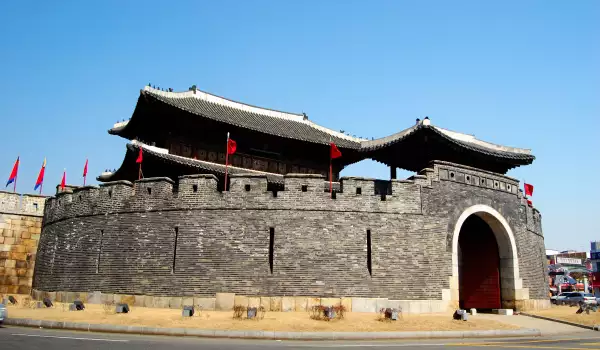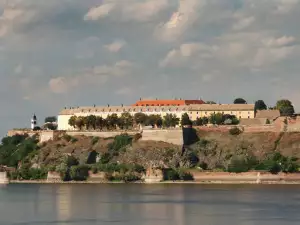Hwaseong Fortress

Hwaseong Fortress, also called brilliant castle is one of the exciting Antiquities of South Korea. It is located in Suwon, about 30 km from Seoul. Hwaseong a large palace complex, it occupies a significant part of the center of Suwon.
In the complex also falls the castle Haenggung, and the whole fortress Hwaseong is included in the UNESCO list of World Heritage in 1996.

Hwaseong is distinctive from other Korean built places, predominantly with its architectural blend of European and Asian styles. It was built in the 18th century, building the fortress began in 1794 and completed in 1796.
Brilliant fortress was built by King Jeongjo in tribute to his father Jangheonseja, who was forced to kill himself before his opponent - King Yeongjo. Jeongjo ranks raising Hwaseong, to store the relics of his father in it, but also to launch a new city, which dominates its own economic power.
The fortress has four main gates: "Hwaseomun" (west gate), "Janganmun" (North Gate), "Paldalmun" (South Gate) and Changnyongmun (east door). The northern and southern gateway of the fortress are larger than the other two and the architectural style is reminiscent of Namdaemun in Seoul in architecture of the roof and stone, and wood craftsmanship.
The south gate was burned down during the Korean War but was restored in 1975. In contrast, the northern door survived barriers of time and today is one of the original parts of the fortress. The two larger portals are accompanied by massive wooden pavilions on two floors, while the smaller doors - east and west, are accompanied by one-story pavilions.

Outside walls of the fortress Hwaseong reach a length of 5, 74 km and a height of 4-6 meters, once surrounding an area of 1, 3 square miles of land. Today the wall is destroyed in some parts, but ¾ of it can be crawled away.
The whole castle was once equipped with 48 facilities that have failed to keep to this. Hwaseong has a gateway, four secret gates, four security platforms, two observation towers, two command posts, two platforms for archers, five bastions of fire attack and defense, four corner towers (+ five other towers), beacon tower and nine bastions.
Construction of the fortress Hwaseong cost very much human labor, money and even capital and victualling material. For raising the palace complex were spent 870, 000 Nyang (the currency then), and 1500 sacks of rice , which were to pay for construction workers.
Work on restoring the castle Hwaseong began in 1964 and continues even today. Brilliant castle is open for public visits on entry fee, and on Monday is the only rest day.















